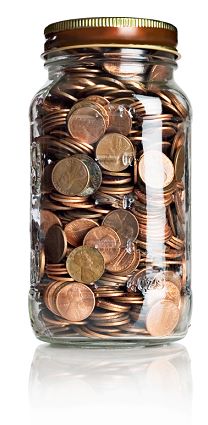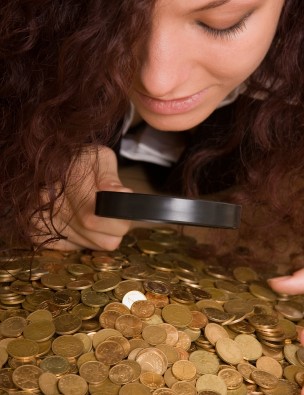By Charles Morgan for CoinWeek….
Coin collecting is a hobby that connects us all to the past. The coins themselves are objects of commerce of course, but the very nature of their existence also helps in the important role of forging our national identity. They make tangible our shared cultural aspirations. And with their inevitable wear and obsolescence, coins serve as a historical record and mementos of the past. For collectors, especially those of us who’ve been around the hobby for a while, and perhaps more so for those of us who entered the hobby as children, coins and collecting them form part of the historical record of our own lives. Who doesn’t remember when and where they bought their first coins? Who doesn’t view the hobby through the lens of those first moments when we became aware of our place in the numismatic world?
 When I think back to when I got into the hobby and how wide-open everything seemed to be, I’m heartened by the exuberance of a young me filled with so much curiosity and willing to spend countless hours solely focused on coins. Armed with nothing but a 1987 edition of the Red Book, my mind raced with daydreams of someday owning a world class coin collection. I studied the history of U.S. coinage, the names of our Chief Engravers and designers, studied the ebb and flow of annual mintage totals, noted the rise and fall of now-bygone denominations, and saw that the hobby had drawn a clear dividing line between the past and present – call it antecladum and postcladum, if you will.
When I think back to when I got into the hobby and how wide-open everything seemed to be, I’m heartened by the exuberance of a young me filled with so much curiosity and willing to spend countless hours solely focused on coins. Armed with nothing but a 1987 edition of the Red Book, my mind raced with daydreams of someday owning a world class coin collection. I studied the history of U.S. coinage, the names of our Chief Engravers and designers, studied the ebb and flow of annual mintage totals, noted the rise and fall of now-bygone denominations, and saw that the hobby had drawn a clear dividing line between the past and present – call it antecladum and postcladum, if you will.
Starting off as many people do, I began to collect the coins that I had access to: coins from circulation. It didn’t take long for me to realize that 1965 was the starting point for the quarter, with nearly all pre-‘64 silver having been extracted by the time I started collecting in 1981. Nickels dating back to the ‘40s and ‘50s were uncommon, but would turn up from time to time. War nickels were for the most part gone – their large reverse mintmarks telegraphed their uniqueness for those who adhere consciously or subconsciously to Gresham’s Law. 1964-Ds were the most common. What’s the roll hunter saying? “If I had a nickel for every 1964-D nickel I ever found…”.
The Lincoln cent formed the backbone of my growing collection. I still remember how cool it was to find my first wheat cent. It was a 1956-D in XF. Its color was dark chocolate brown and it just felt different to me than the Memorial cents I was accustomed to handling. My wheat cent collection grew enormously after a neighbor found out that I was into coins. He was a high school Spanish teacher who lived next door to us, a very polite and generous man who had immigrated to the United States from Bolivia. He had this enormous jug filled with pennies. It must have taken him five or ten years to fill it up and it must have had a thousand dollars in it. We spent a whole evening pouring cents out onto his kitchen table looking for wheat cents, making stacks sorted by date and mint mark. I saved every 1959 Memorial cent, just to be sure, in case it had some value in being a first year issue.
After many hours, we had pulled aside over $20 in wheat cents, with several dating back to the 1910s, the oldest being a well-worn 1910. Nothing rare to speak of in our haul, although there were several S-Mints.
 I had talked up the value of wheat cents to the teacher so much that he decided that we would take our stash to the Perry Coin & Loan company, a small strip-mall pawn shop located in the industrial district of Hopewell, Virginia. Everything about that place screamed coin shop. From the larger-than-life plaster mockup of a Mercury dime, which hung from the inside of the shop’s barred windows, to the long aisle of glass display cases, under which were housed tray upon tray of all manner of coins in 2×2’s, sheets of obsolete paper currency, and stacks of one-ounce silver ingots. He also had bargain boxes of Indian Head cents, Liberty “V” nickels, Buffalo nickels, and Pre-’65 silver coinage. All circulated, of course.
I had talked up the value of wheat cents to the teacher so much that he decided that we would take our stash to the Perry Coin & Loan company, a small strip-mall pawn shop located in the industrial district of Hopewell, Virginia. Everything about that place screamed coin shop. From the larger-than-life plaster mockup of a Mercury dime, which hung from the inside of the shop’s barred windows, to the long aisle of glass display cases, under which were housed tray upon tray of all manner of coins in 2×2’s, sheets of obsolete paper currency, and stacks of one-ounce silver ingots. He also had bargain boxes of Indian Head cents, Liberty “V” nickels, Buffalo nickels, and Pre-’65 silver coinage. All circulated, of course.
When we got Perry’s attention, he came over to us and we presented our box of wheat cents. I kind of expected him to go through them himself and make an accounting of how many 20-cent dates, 12-cent dates, and 10-cent dates we had and then pay us for them. Instead he took a cursory look at the pile of common-date worn wheat cents and told us that he didn’t have a need for them. I was disappointed and a little embarrassed, to tell you the truth. The Spanish teacher let out a friendly laugh and made some small talk with the dealer who pulled out a couple of his bargain boxes and told me I could have a few pieces. Suddenly, my disappointment slipped away and I was in young numismatist heaven.
That dealer’s kind act has stayed with me some thirty years later and has been paid back in kind many times over whenever I see a youngster interested in coins, or even a person my age just getting into the hobby. Paying it forward and looking out for other collectors forms the cornerstone of my approach to coin writing and is what I want to do with whatever influence I have in my corner of the hobby and those in it or entering it.
So during this holiday season of gifts and giving, forget coins as an investment. Put aside precious metals values, set registry rankings, and whatever specialist niche you’ve carved out for yourself. Think about that youngster in your life who could be the next great numismatist, take them under your wing, mentor them, and share in the excitement of new discoveries and limitless potential.
Get them a coin board, give them a head start by way of a few cool coins from yesteryear, arm them with some knowledge and promise that you’ll be there to mentor them and be excited for them as they explore the exciting world of numismatics for themselves. You’ll do a lot of good for the hobby, for that youngster, and believe it or not, for yourself as well.
Charles Morgan
FLIP OF A COIN:
In one of the most notorious crimes of the twentieth century, the twenty-month-old son of aviation pioneer Charles Lindbergh was kidnapped from his Hopewell, New Jersey home. The kidnapper demanded a sizeable ransom for the safe return of the boy, which the Lindberghs paid exclusively in Gold Certificates. The thinking was that an individual passing these notes would be conspicuous. They were right: a $10 bill used at a gas station led to the arrest of German immigrant Bruno Hauptmann.
Let the Market Decide: During the Civil War, virtually all coin production from the Philadelphia Mint was hoarded. By 1863, even once plentiful small cents were growing scarce. This led private businesses to mint their own thin, cent-sized tokens to facilitate commerce. The Federal Government was not amused and put a stop to the practice, but they also adopted a cheaper bronze composition for the cent, which saw more circulation after the change.
The original U.S. ten-cent coin was called a disme (originally pronounced “DEEM“?), from the Old French word for “one tenth“. The term and its French pronunciation didn’t stick, and by the time the Philadelphia Mint started to produce the nation’s coinage, the spelling and pronunciation of the term morphed into the currently used “dime”.





I have collected some old coins from the 1970s. That year was the hardest year for me; and so when I look at my coins, I always remember my hardest times during that year.
I am 55 years old and can remember pulling many wheat cents from
circulation. Most of them I would return to the bank except for the
occasional S- mint. Even today I go to the local coin show (100 miles
away) and buy 2-3 rolls of partial date Buffaloes and a roll or two of
wheat cents. Over the course of a couple of months I spend them in
different places. The reason for this is to try to encourage a youngster
to maybe start collecting. If we do not do small inexpensive things like
this there may not be a collector in the future to buy some of our
treasures. If pulling that wheat cent from circulation and saving it means
that much then maybe another hobby should be pursued .
Go thought Louie. I have started my grandchildren collecting pennies and already know out of the seven, which ones will continue. I am jst a little older than you and really like your idea. I must have fifty pounds of wheat pennies and will start using them as payment as you to help with these young collectors. Bravo to you..:)